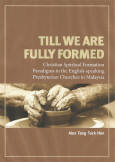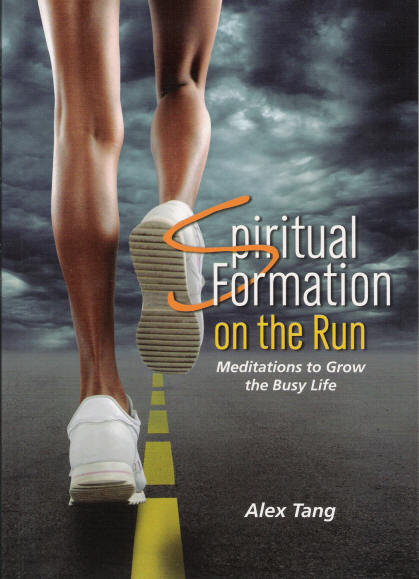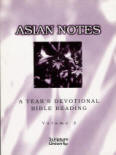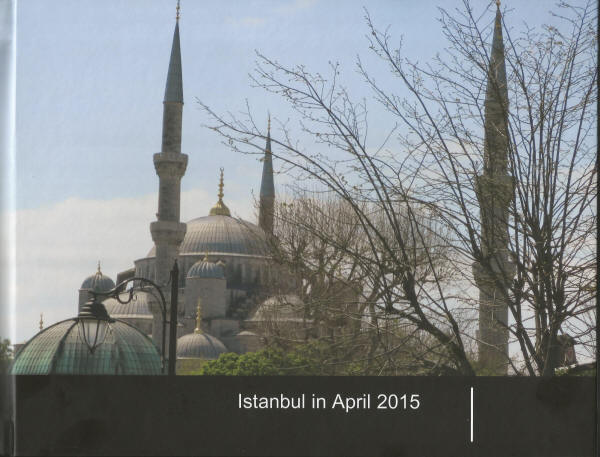Community Spiritual Formation
 James C. Wilhoit (2008), Spiritual Formation as if the Church Mattered: Growing in Christlikeness through Community, Grand Rapids, MI: Baker Academic
James C. Wilhoit (2008), Spiritual Formation as if the Church Mattered: Growing in Christlikeness through Community, Grand Rapids, MI: Baker AcademicSpiritual formation has become a catchphrase in churches and is gathering as much attention as churches that are ‘emerging.’ Unfortunately, different people understands spiritual formation differently. To some, it is the practice of spiritual disciplines, to others the introduction of ancient spiritual practices, while in yet other churches, it is adding candles to the church service. James C. Wilhoit is the Scripture Press Professor of Christian Formation and Ministry at Wheaton College. He explains that “Christian spiritual formation refers to the intentional communal process of growing in our relationship with God and becoming conformed to Christ through the power of the Holy Spirit” (2008, 23). The key words of note are Christian, intentional, communal, process, Christ-likeness, and the Holy Spirit.
Wilhoit proposes a ‘curriculum for Christlikeness’ which have the following dimensions (1) receiving, (2) remembering, (3) responding, and (4) relating. Each dimension has a few ‘community practices’ to achieve it. This curriculum is for community spiritual formation. Receiving is to be open to the grace of God and involve ‘worship, confession, sacraments, and prayer’ as community practices. Remembering means ‘tranformational teaching’ leading to knowing that we are part of God’s community. The community practices are ‘teaching, preaching, evangelism, meditation, spiritual guidance, and small groups’. Responding is in service and involves ‘discernment, honouring relational commitment, setting aside prejudices, ministries of compassion.’ Relating is living in a faith community and involves ‘hospitality, handling conflict well, honouring relationships, Sabbath observance, (and) attending to pace of life.’ The community practices are similar to that of the Christian practices as suggested by Dysktra, Dorothy Bass and Diana Bass (Bass 1997; Bass 2004; Dykstra 2005).
Wilhoit recognises that we are all being spiritually formed all the time and that formation through the work of the Holy Spirit occurs before conversion (2008, 27). He builds upon and interacts with Dallas Willard’s work on spiritual formation (1988;1998; 2002). However he did not interact with Willard’s psychosocial transformation of the soul as spiritual formation (2002,38-39). Instead, he uses the concept of the ‘imitation of Christ’ as the means and ends of spiritual formation (Meye 1994). Also, he did not expand on how different this is from discipleship.
Growing in Christlikeness through community implied that community is the context in which spiritual formation takes place. However, aside from naming the community practices, Wilhoit did not explain how the community become the means of spiritual growth. Are the community practices the only means of spiritual formation? Are there any weightage to the community practices? Are any practices more important than others? Who is to practise these community practices? Does it involve only the pastors, leaders or everyone? It must be recognised that it is unrealistic to expect all the members of the church to practice all the community practices. Community practices are also spiritual disciplines practiced by individuals (Foster 1989; Whitney 1991; Tan and Gregg 1997). Whitney has shared on some ways how some of these disciplines can be used for both individual and the church (1996). However both Wilhoit and Whitney has not indicated whether there is a critical level of participation of members of a community before that community becomes a context for spiritual formation. What is this critical level?
The weakness of this model based on community practices is the danger of legalism. The Pharisees in the bible epitome legalism in spiritual practices. Though theologian Roy Zuck has written in length on the role of the Holy Spirit and educator Parker Palmer of the importance of the teacher, the danger is real as the community practices become the end rather than the means (Zuck 1984; Palmer 1998). It may become another ‘church activity.’ It will have been useful if Wilhoit has explained how his community spiritual formation model can be sustained.
Baptist Jeff Woods concludes from his meta-analysis of recent congregational studies done in the United States that there are five factors of influence in a congregation that is spiritually vital. They are (1) a willingness to change, (2) right theological thinking, (3) appropriate organisational metaphors, (4) clarity of purpose, and (4) missional leadership (2003). Wilhoit in his survey of the bible discovered that there are three families of images or metaphor for spiritual formation; nurture, journey and resurrection (2008, 24-25). These organisational metaphors are appropriate as church does matter in spiritual formation. Spiritual formation is not about a lone wanderer but a people journeying together.
Soli Deo Gloria
Bibliography
Bass, D. B. (2004). The Practicing Congregation: Imagining a New Church. Herdon, V.I., The Alban Institute.
Bass, D. C., Ed. (1997). Practicing Our Faith: A Way of Life for a Searching People. The Practices of Faith Series. San Francisco, Jossey-Bass.
Dykstra, C. (2005). Growing in the Life of Faith: Education and Christian Practices. Louisville, KN, Westminster John Knox Press.
Foster, R. (1989). Celebration of Discipline: The Path To Spiritual Growth. London, Hodder & Stoughton.
Meye, R. P. (1994). The Imitation of Christ: Means and End of Spiritual Formation. The Christian Educator's Handbook on Spiritual Formation. J. C. W. Kenneth O. Gangel. Grand Rapids. MI, Baker Books.
Palmer, P. J. (1998). The Courage to Teach: Exploring the Inner Landscape of a Teacher's Life. San Francisco, Jossey-Bass.
Tan, S.-Y. and D. H. Gregg (1997). Disciplines of the Holy Spirit: How to Connect to the Spirit's Power and Presence. Grand Rapids, MI., Zondervan Publishing House.
Whitney, D. S. (1991). Spiritual Disciplines for the Christian Life. Colorado Springs, CO., NavPress.
_____,(1996). Spiritual Disciplines Within the Church: Participating Fully in the Body of Christ. Chicago, Moody Press.
Wilhoit, J. C. (2008). Spiritual Formation as if the Church Mattered: Growing in Christ through Community. Grand Rapids, MI, Baker Academic.
Willard, D. (1988). The Spirit of the Disciplines: Understanding How God Changes Lives. New York, HarperCollins Publisher.
_____,(1998). The Divine Conspiracy: Rediscovering Our Hidden Life in God. New York, HarperCollins Publishers.
_____,(2002). Renovation of the Heart: Putting on the Character of Christ. Colorado Springs, CO., NavPress.
Woods, J. (2003). "New Tasks for Congregation: Reflections on Congregational Studies." Resources for American Christianity Retrieved 12/1/07, from http://www.resourcingchristianity.org.
Zuck, R. B. (1984). The Holy Spirit in Your Teachings: The relationship That Makes All the Difference. Wheaton, Victor Books.
more here
.
Labels: Christian education, Discipleship, Spiritual Disciplines, Spiritual Formation















0 Comments:
Post a Comment
<< Home